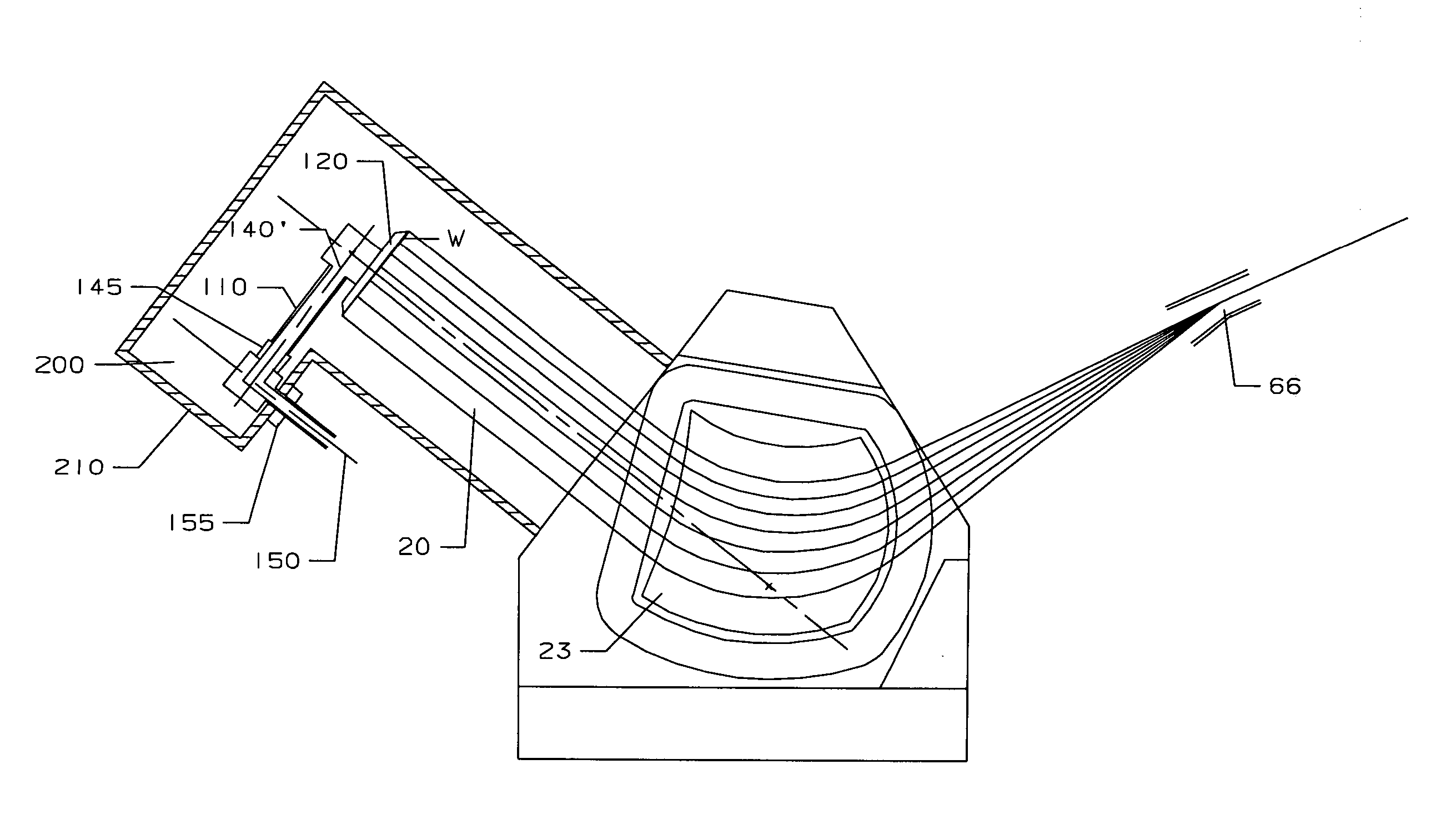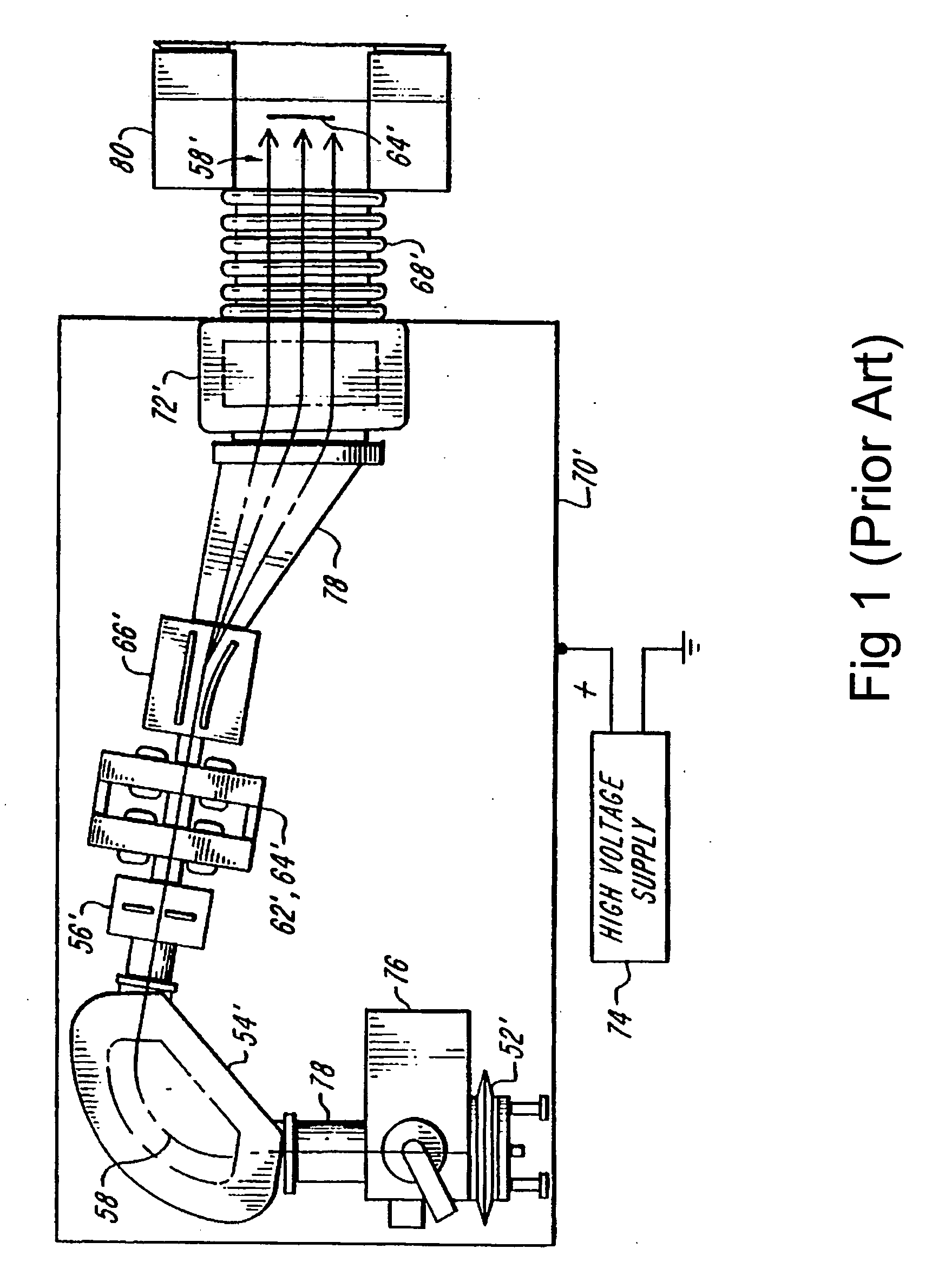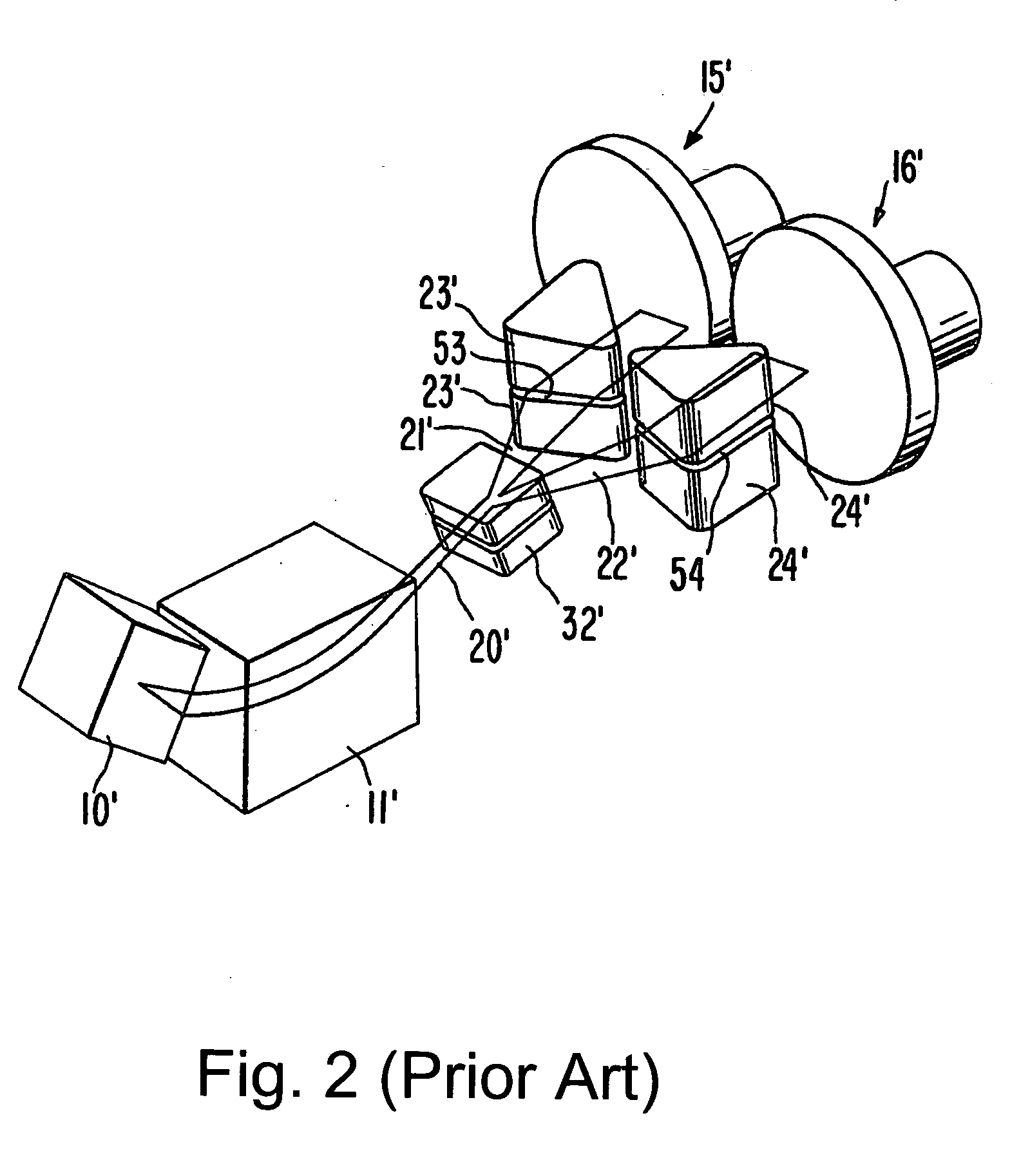Radial scan arm and collimator for serial processing of semiconductor wafers with ribbon beams
a technology of ribbon beams and scan arms, which is applied in the direction of irradiation devices, electric discharge tubes, electrical apparatus, etc., can solve the problems of contaminating the wafer, difficult lubrication of the moving mechanism in vacuum, and more rapid wear
- Summary
- Abstract
- Description
- Claims
- Application Information
AI Technical Summary
Benefits of technology
Problems solved by technology
Method used
Image
Examples
first embodiment
[0098] In the first embodiment illustrated by FIG. 6, the ribbon beam 20 is traveling horizontally and its long dimension is in the horizontal plane. This means that the x and z axes are horizontal and the y-axis is vertical. The workpieces to be implanted are 300 mm silicon wafers. The radial scan arm 110 is 450 mm long, and its pivot lies in the plane y=0. The scan pivot axis is of course aligned with the beam z-axis, and the alignment may be confirmed [by methods described in U.S. patent application Ser. No. 10 / 807,772, filed Mar. 24, 2004, or by other methods].
[0099] The tilt pivot axis 140 lies in a plane inclined to the z-axis, and does not intersect the scan pivot axis. Its orientation is defined as follows: in order for the edge of the wafer to clear the ion beam, the arm must pivot through an angle whose sine exceeds (150 mm / 450 mm), i.e. by + / −19.5 degrees. To allow for the finite y-extent of the beam (probably + / −30 mm) the arm would have to be rotated through an angle of...
second embodiment
[0108] As shown by FIG. 7, in this second embodiment the ribbon beam is also traveling horizontally, but its long dimension is in the vertical plane. This means that the y and z axes are horizontal, and the x-axis is vertical. The arm is 450 mm long, and its pivot lies in the plane y=0, aligned with the beam z-axis. The tilt pivot axis in this case is aligned with the radial arm. From the mid-point of the wafer scan, the load / unload position is reached by rotating the radial arm by 90 degrees so that its length is parallel to the y-axis, and then rotating 90 degrees about the tilt pivot axis so that the wafer surface is horizontal. These rotations have been defined sequentially, but in practice they occur simultaneously to save time.
[0109] The arm pivot axis may be located either above or below the beam. However, a location above the beam (as shown in FIG. 7) is preferable so that particles generated by the beam, or by surfaces it may strike, are prevented from falling on to the waf...
third embodiment
[0115] An additional mechanism may be used in conjunction with this or other embodiments of the invention as a means of providing a two-dimensional mechanical scan. To meet this end, this third embodiment may be mounted on a movable slide effective to move the entire radial arm scan assembly in the vertical direction. Accordingly, it may now be used to mechanically scan the wafer in two orthogonal directions; and this is very useful under certain conditions (e.g., very low energies below 1 keV and high currents of several mA) where a sufficiently uniform ribbon beam is hard to obtain. In this case, a beam 21 which is approximately circular or rectangular, as illustrated in FIG. 10, can be used.
[0116] Also, the low energy beam can be manipulated by a multipole lens to reduce its size considerably. FIG. 10 illustrates the structure of this arrangement. As seen therein, the sliding seal may be constructed using nested seals of delrin or similar plastic, with the intervening space diffe...
PUM
 Login to View More
Login to View More Abstract
Description
Claims
Application Information
 Login to View More
Login to View More - R&D
- Intellectual Property
- Life Sciences
- Materials
- Tech Scout
- Unparalleled Data Quality
- Higher Quality Content
- 60% Fewer Hallucinations
Browse by: Latest US Patents, China's latest patents, Technical Efficacy Thesaurus, Application Domain, Technology Topic, Popular Technical Reports.
© 2025 PatSnap. All rights reserved.Legal|Privacy policy|Modern Slavery Act Transparency Statement|Sitemap|About US| Contact US: help@patsnap.com



